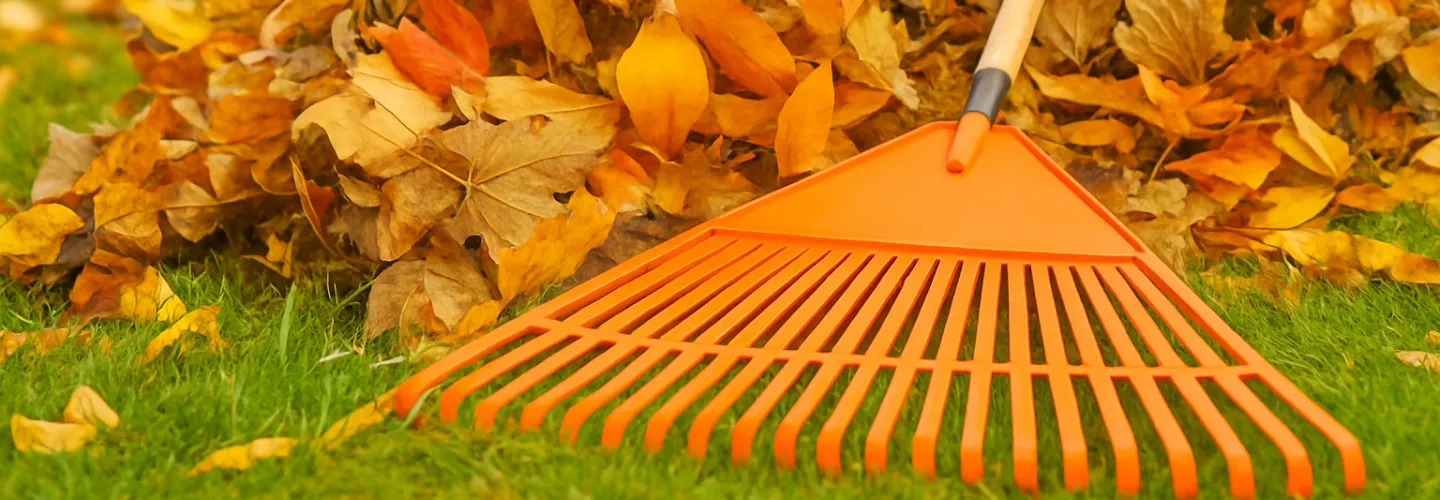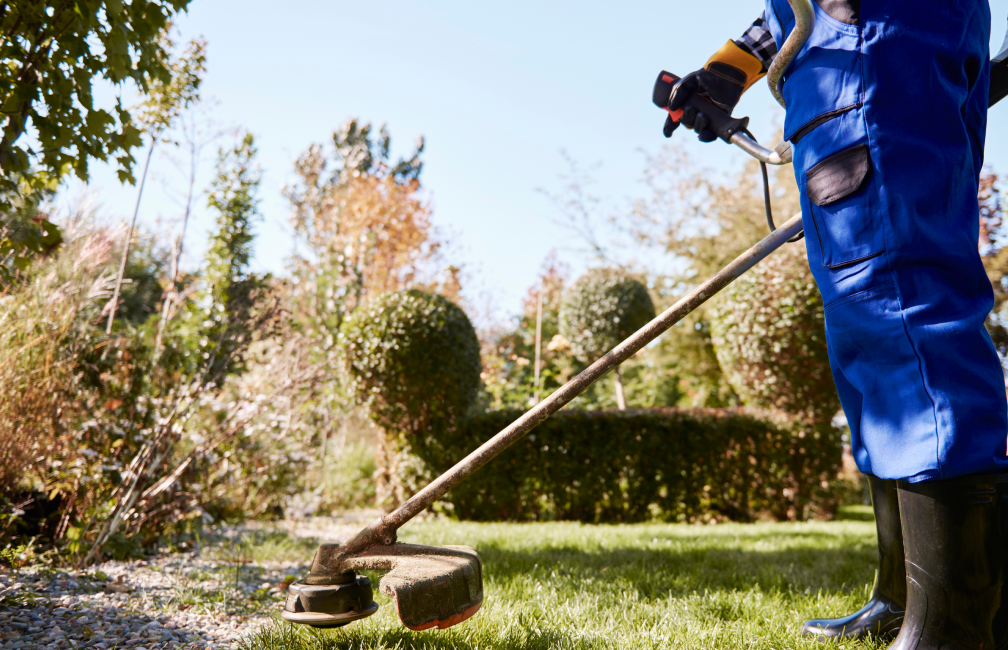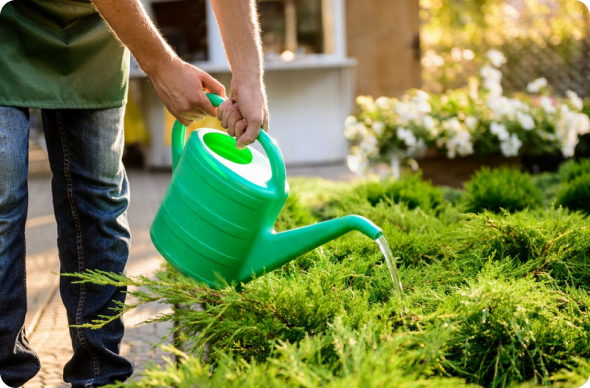
Waltham Leaf Removal Services
Choose our expert leaf removal for a hassle-free, thorough cleanup that keeps your yard healthy, safe, and looking its best all season long.
Get a Free QuoteWhen to Schedule Leaf Removal in Waltham, MA – Seasonal Guide
In Waltham, MA, the best times for leaf removal are typically late October through early December, and again in early spring before new growth begins. The city’s climate features crisp autumns with variable rainfall, and neighborhoods like Cedarwood and Piety Corner often experience heavy leaf fall due to mature maples and oaks. Local weather patterns—such as early frosts and occasional late-season storms—can accelerate leaf drop, making timely removal essential for maintaining healthy lawns and preventing clogged drains.
Environmental factors unique to Waltham, including the clay-heavy soils in areas near Prospect Hill Park and the shaded yards common in the Highlands, can increase moisture retention and slow leaf decomposition. This can lead to mold or turf damage if leaves are left too long. Homeowners should also be aware of municipal guidelines regarding yard waste collection, which may affect the optimal timing for scheduling professional leaf removal services.
Local Factors to Consider for Leaf Removal in Waltham
- Tree density and species (e.g., mature oaks and maples in Brandeis and Lakeview)
- Terrain and yard slope, which can affect leaf accumulation
- Precipitation patterns and humidity, impacting leaf decomposition
- Frost dates and risk of early snow cover
- Municipal restrictions and collection schedules
- Shade coverage and soil type, influencing moisture retention
Benefits of Leaf Removal in Waltham

Enhanced Curb Appeal
Prevents Lawn Damage
Reduces Pest Infestations
Improves Lawn Health
Saves Time and Effort
Professional and Reliable Service

Waltham Leaf Removal Types
Curbside Leaf Pickup
Full-Service Leaf Removal
Leaf Mulching
Vacuum Leaf Collection
Bagged Leaf Collection
Seasonal Leaf Cleanup
On-Demand Leaf Removal
Our Leaf Removal Process
Site Evaluation
Leaf Collection
Debris Removal
Final Inspection
Why Choose Waltham Landscape Services

Waltham Homeowners Trust Us
Expert Lawn Maintenance
Competitive Pricing
Professional Team
Satisfaction Guarantee
Personalized Service
Reliable Scheduling
Contact Waltham's Department of Public Works for Seasonal Leaf Collection & Curbside Pickup Schedules
Waltham's Department of Public Works implements comprehensive seasonal leaf collection throughout the city's diverse metropolitan neighborhoods from mid-October through early December, serving this distinguished Middlesex County community where "Watch City" industrial heritage converges with academic excellence and critical Charles River watershed protection responsibilities. The city's leaf management program employs cutting-edge vacuum collection technology that methodically gathers loose leaves positioned curbside by residents, eliminating bagging requirements while advancing municipal composting initiatives and regional water quality preservation objectives.
Collection activities operate through strategic ward-based routing that ensures complete coverage across Waltham's residential districts, from historic mill village areas to contemporary university-adjacent developments requiring coordinated scheduling approaches. The department publishes comprehensive collection schedules on the municipal website with frequent updates reflecting seasonal conditions and weather-related modifications throughout the autumn cleanup period.
- Ward-based routing methodology: Strategic coverage ensuring complete service delivery across mill heritage and university-adjacent residential neighborhoods
- Cutting-edge vacuum technology: Advanced loose-leaf pickup eliminating resident bagging requirements for efficient processing
- Watch City heritage accommodation: Collection procedures addressing historic mill district characteristics and academic community considerations
- Charles River watershed protection: Operations supporting National Wild and Scenic River preservation and metropolitan Boston environmental leadership
Residents must rake leaves to designated curbside locations by 7:00 AM on scheduled collection days, maintaining minimum distances of ten feet from storm drainage infrastructure, fire hydrants, and parked vehicles to facilitate safe operations while protecting the Charles River National Wild and Scenic corridor and regional water quality systems throughout the collection season.
Waltham's Resource Recovery Center provides supplementary disposal capacity with extended weekend operating hours during peak season, accepting both loose leaves and biodegradable bagged materials from residents with current permits along with brush and organic debris from comprehensive urban property maintenance activities.
Waltham Department of Public Works
610 Main Street, Waltham, MA 02452
Phone: (781) 314-3000
Official Website: Waltham Department of Public Works
Understanding Leaf Accumulation Impact on Waltham's Charles River Valley & Urban Fill Soil Conditions & Lawn Health
Waltham's distinctive "Watch City" landscape encompasses diverse glacial formations and Charles River valley deposits extensively modified by decades of industrial development, creating highly specialized soil conditions significantly affecting leaf accumulation impacts on residential turf throughout the fall season. The city's geological foundation includes well-drained Canton and Charlton series soils on drumlin uplands, fertile Hadley series alluvial deposits along Charles River corridors, Urban land-Udorthents complexes throughout mill district areas, and moderately drained Paxton and Woodbridge series on transitional slopes, forming an intricate pattern of drainage characteristics across different industrial heritage and academic zones.
These Middlesex County glacial till and alluvial formations produce growing environments where decades of mill city industrial activity and metropolitan development have substantially modified natural soil conditions through construction processes, utility installations, and urban infrastructure development that influence drainage patterns and soil structure throughout established neighborhoods serving diverse metropolitan populations.
- Fertile Charles River alluvium: Hadley series creating accelerated decomposition and rapid turf damage within 6-9 days during wet periods due to enhanced biological activity
- Well-drained drumlin uplands: Canton and Charlton series providing moderate leaf tolerance for 10-14 days under optimal drainage conditions
- Urban fill complexes: Industrial legacy materials creating severely challenging growing conditions with restricted drainage and accelerated damage within 3-5 days
- Mill heritage soil modifications: Construction activities and industrial development creating compacted conditions with rapid turf stress within 5-7 days
Heavy leaf accumulation on Waltham's Charles River valley properties creates accelerated damage patterns within six to nine days due to fertile alluvial soils and enhanced biological activity, while properties with urban fill materials from mill development experience the most rapid damage progression, with visible turf yellowing appearing within three to five days of substantial organic matter coverage.
Waltham Conservation Commission Guidelines for Leaf Disposal Near Wetlands & Protected Areas
Waltham encompasses extraordinary protected natural resource diversity reflecting its strategic position along the Charles River National Wild and Scenic corridor and commitment to preserving natural areas within the metropolitan framework, requiring comprehensive leaf management coordination near sensitive ecosystems distributed throughout residential neighborhoods. The city contains portions of the Charles River Reservation, Prospect Hill Park conservation area, Beaver Brook wetlands, Hardy Pond, Cambridge Reservoir watershed, various urban wetlands, and conservation corridors providing essential habitat and stormwater management functions.
The city's protected resources include both natural formations and the Charles River National Wild and Scenic designation that create comprehensive regulatory requirements affecting residential leaf management throughout significant portions of the metropolitan community serving diverse academic and residential populations.
- Charles River National Wild and Scenic corridor: Federally designated waterway with comprehensive buffer zone requirements and metropolitan Boston watershed significance
- Prospect Hill Park conservation interface: Municipal conservation area requiring absolute prevention of organic debris contamination and urban wildlife habitat preservation
- Beaver Brook tributary system: Local waterway requiring organic debris prevention and aquatic habitat protection measures throughout mill heritage areas
- Hardy Pond and Cambridge Reservoir ecosystems: Significant water bodies demanding careful nutrient loading prevention and regional water supply protection
Waltham Conservation Commission
610 Main Street, Waltham, MA 02452
Phone: (781) 314-3342
Official Website: Waltham Conservation Commission
The Conservation Commission implements buffer zone requirements under the Massachusetts Wetlands Protection Act affecting residential properties throughout the city, particularly areas adjacent to the Charles River National Wild and Scenic corridor and extensive conservation areas characteristic of this metropolitan Boston mill city landscape.
Keep Leaves Out of Streets & Storm Drains: Waltham's MS4 Stormwater Compliance Requirements
Waltham's sophisticated stormwater management program operates under stringent federal regulations protecting the Charles River National Wild and Scenic corridor, a nationally significant waterway supporting diverse aquatic communities and flowing through metropolitan Boston communities toward Boston Harbor marine environments. The city's Municipal Separate Storm Sewer System permit under the Clean Water Act and EPA NPDES program mandates absolute organic debris prevention protecting downstream water quality.
The city's extensive storm drainage network serves high-density mill city residential, commercial, and academic developments while discharging into Charles River tributaries including Beaver Brook through multiple outfall points, creating direct pathways for pollution reaching this nationally designated waterway supporting recreational activities and regional water quality improvement initiatives.
- National Wild and Scenic River protection: Charles River requiring enhanced environmental protection standards and comprehensive organic debris prevention
- Metropolitan watershed leadership: Regional waterway requiring coordination with Boston area communities and federal designation compliance
- Mill city heritage coordination: Storm system management addressing both historic industrial infrastructure and contemporary environmental protection standards
- Academic community responsibility: University area drainage requiring coordination with educational facility environmental standards and research initiatives
U.S. Environmental Protection Agency, Region 1
5 Post Office Square, Boston, MA 02109
Phone: (617) 918-1111
Official Website: U.S. Environmental Protection Agency, Region 1
Decomposing leaves in Waltham's metropolitan stormwater systems create particularly severe environmental impacts due to concentrated urban runoff and the Charles River's National Wild and Scenic designation requiring absolute protection from nutrient loading and organic debris contamination.
Waltham's Implementation of Massachusetts Organic Waste Diversion Requirements for Fall Leaves
Waltham addresses Massachusetts organic waste diversion mandates under Massachusetts General Law Chapter 111, Section 150A through metropolitan mill city programs that efficiently manage exceptional organic waste volumes while serving diverse residential neighborhoods, academic institutions, and commercial areas with comprehensive environmental stewardship objectives reflecting the city's Watch City heritage of innovation and resource management.
The municipal composting operation transforms collected organic matter into premium soil amendments distributed to residents for gardening and landscaping projects throughout the community, supporting environmental compliance while providing practical community benefits addressing metropolitan soil improvement needs common in mill city development areas with challenging urban growing conditions.
- Watch City processing innovation: Advanced systems handling exceptional leaf quantities from diverse mill heritage, academic, and contemporary urban properties
- Academic community integration: Processing methods accommodating Brandeis University campus organic waste and educational sustainability initiatives
- Mill heritage soil enhancement: Compost production addressing modified soil conditions and challenging urban growing environments throughout historic industrial areas
- Metropolitan environmental leadership: Processing supporting both residential needs and regional Boston area sustainability objectives
Massachusetts Department of Environmental Protection
1 Winter Street, Boston, MA 02108
Phone: (617) 292-5500
Official Website: Massachusetts Department of Environmental Protection
Massachusetts Department of Agricultural Resources
251 Causeway Street, Boston, MA 02114
Phone: (617) 626-1700
Official Website: Massachusetts Department of Agricultural Resources
Optimal Leaf Removal Timing for Waltham's Tree Species & New England Fall Weather Patterns
Waltham's mature metropolitan forest canopy incorporates both Watch City industrial-era plantings and contemporary urban specimens, creating complex leaf drop sequences requiring strategic timing coordination with municipal collection services throughout the extended fall season. The community's diverse tree populations include heritage sugar maples, red maples, Norway maples, white oaks, red oaks, London plane trees, and various academic campus ornamental species contributing to extended cleanup requirements from early October through late November.
The city's metropolitan location creates varied microclimatic conditions affecting leaf drop timing, with urban heat island effects in mill district areas potentially extending retention periods while areas near the Charles River and Brandeis University campus experience different seasonal patterns requiring flexible collection scheduling across different neighborhood zones.
- Early October: Sugar maples and Norway maples initiate major leaf shedding throughout mill heritage neighborhoods and academic districts
- Mid-October: Red maples and London plane trees enter intensive drop phases requiring coordinated municipal collection response
- Late October: White oaks and red oaks reach peak volume periods demanding systematic removal efforts across all metropolitan districts
- November: Pin oaks and persistent campus ornamental species continue shedding requiring sustained collection activities throughout urban neighborhoods
Waltham's position in USDA Hardiness Zone 6a creates typical New England fall patterns with average first frost dates occurring around October 15-20, triggering accelerated leaf drop across multiple species simultaneously throughout the diverse metropolitan landscape that characterizes this distinguished Watch City community.
Coordination with National Weather Service Boston forecasts helps optimize collection timing by scheduling pickup following major drop events while avoiding removal immediately before heavy precipitation that creates matted leaf conditions and complicates collection operations throughout the city's complex urban street network.
Post-Leaf Removal Lawn Recovery & Winter Preparation in Waltham's Climate Zone
Waltham's metropolitan mill city environment creates distinctive lawn recovery requirements following comprehensive leaf removal, with Charles River valley influences, industrial legacy soil conditions, and urban development impacts requiring specialized approaches to turf restoration and winter preparation throughout the established community.
Post-removal assessment must address combined effects of leaf accumulation and Waltham's unique metropolitan environmental factors, including soil modifications from Watch City industrial activities, altered drainage patterns from urban development, and heat island effects that may compound damage from organic matter coverage during fall months throughout different neighborhood areas.
Metropolitan soil conditions throughout Waltham require intensive recovery efforts addressing compaction relief, drainage improvement, and nutrient management adapted for mill city growing environments created by decades of industrial heritage and contemporary urban development activities.
- Mill heritage soil rehabilitation: Recovery strategies addressing Watch City industrial legacy impacts and altered drainage characteristics throughout diverse metropolitan neighborhoods
- Charles River valley coordination: Turf restoration practices addressing fertile alluvial soils and seasonal moisture variations near the National Wild and Scenic River
- Academic community integration: Recovery programs coordinating with Brandeis University area landscape management and educational sustainability initiatives
- Metropolitan environmental leadership: Recovery timing adapted for urban heat island effects and regional Boston area environmental protection objectives
University of Massachusetts Extension Center for Agriculture, Food and the Environment
161 Holdsworth Way, Amherst, MA 01003
Phone: (413) 545-4800
Official Website: University of Massachusetts Extension
Late-season fertilization in Waltham requires timing coordination addressing metropolitan soil conditions and Charles River watershed protection requirements, with applications scheduled to support turf recovery while preventing nutrient runoff into the National Wild and Scenic River system throughout the metropolitan Boston area.
What Neighborhoods Do We Serve Throughout Waltham, MA?
Downtown Waltham Watch City District encompasses the city's historic industrial core with traditional mill architecture surrounded by established residential neighborhoods and heritage tree plantings creating substantial leaf volumes requiring coordinated collection while preserving Watch City character and Charles River access considerations.
The Highlands features elevated residential development with exceptional tree coverage, panoramic views, and well-drained glacial soils creating substantial leaf volumes from mature forest species while requiring careful collection coordination due to elevation and wind exposure considerations during fall weather events.
South Side Neighborhoods include diverse residential areas with traditional triple-decker architecture, mature specimen trees, and proximity to the Charles River creating substantial leaf volumes requiring intensive collection efforts. Notable characteristics include:
- Historic mill worker housing with heritage tree preservation requirements and narrow street access considerations
- Mixed residential development from traditional homes to contemporary apartments creating varied collection timing needs
- Direct proximity to Charles River National Wild and Scenic corridor requiring comprehensive environmental protection coordination
- Mature street tree populations requiring specialized collection equipment and routing approaches for efficient service delivery
Brandeis University Area encompasses the distinguished academic campus with exceptional specimen tree coverage, student housing complexes, and proximity to conservation areas requiring specialized collection coordination addressing both educational facility needs and residential neighborhood integration throughout the fall season.
Weston Street Corridor includes mixed residential development with mature street trees, varied property configurations, and proximity to Cambridge Reservoir requiring collection coordination with water supply protection measures and environmental compliance throughout the seasonal cleanup period.
Cedarwood and Warrendale Districts feature suburban residential neighborhoods with diverse tree populations, established housing stock, and conservation area proximity creating substantial leaf volumes requiring systematic collection coordination with environmental protection measures throughout the extended fall season.
Pequossette Park Interface encompasses residential areas adjacent to this municipal park with exceptional tree coverage from both private landscaping and adjacent parkland areas, requiring extended collection periods and coordination with municipal park maintenance throughout the fall season.
Waltham Municipal Bylaws for Leaf Blowing Equipment Operation & Noise Control
Waltham's noise control regulations establish comprehensive guidelines for powered equipment operation throughout the city's metropolitan residential neighborhoods and academic areas, balancing effective leaf management needs with quality of life considerations for residents and students in this distinguished Watch City community's diverse urban development settings.
The bylaws recognize both the necessity of efficient leaf cleanup in mature metropolitan neighborhoods and the importance of maintaining peaceful residential environments during equipment operation throughout the extended fall season, with enforcement procedures addressing community livability standards and academic community consideration requirements.
- Monday through Friday: 7:00 AM to 6:00 PM for gas-powered leaf blowing equipment operation in residential areas
- Saturday: 8:00 AM to 5:00 PM with enhanced consideration for weekend residential activities and Charles River recreational use
- Sunday and holidays: Complete prohibition on powered equipment operation except for documented emergency situations
- Academic community considerations: Noise level monitoring addressing university area proximity and student residential livability standards
Commercial landscaping contractors operating in Waltham must obtain comprehensive municipal permits and maintain extensive liability insurance coverage for all leaf removal services, with additional requirements for equipment noise certification and emission compliance addressing metropolitan working conditions throughout the city's diverse residential, academic, and commercial areas.
Waltham Building Department
610 Main Street, Waltham, MA 02452
Phone: (781) 314-3150
Official Website: Waltham Building Department
Gas-powered equipment must comply with EPA emission standards and noise level restrictions appropriate for metropolitan residential and academic environments, with enforcement procedures addressing neighbor complaints and maintaining community livability standards during intensive leaf removal operations throughout the city's established Watch City neighborhood areas.